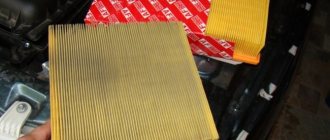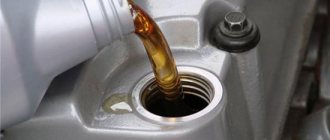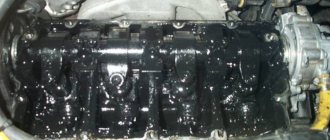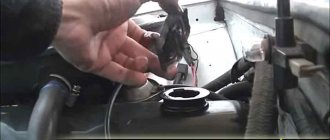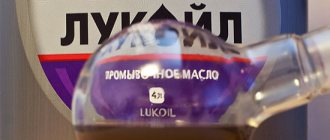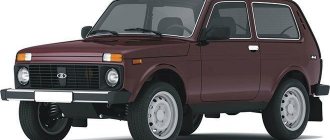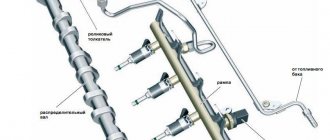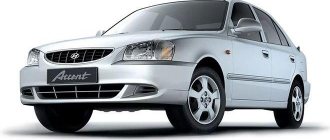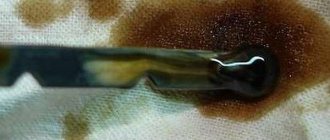One of the common problems with internal combustion engines is oil getting into the cooling system. Such a violation may lead to failure of the power unit and the need for major repairs. Therefore, it is important to be able to timely diagnose a malfunction and eliminate the causes that led to the penetration of lubricant into the antifreeze.
Oil getting into the cooling system is more often observed in foreign car models, but domestic models also suffer from this problem. This defect indicates a lack of tightness in the cooling and lubrication systems. The malfunction must be eliminated immediately, almost at the moment of discovery. Otherwise, the matter will end with a major overhaul of the engine.
The internal combustion engine requires lubricant for efficient operation and cooling. In the head and the cylinder block itself there are special channels - oil and cooling system channels (cooling jacket). The presence of oil in antifreeze can be observed regardless of the characteristics of the engine and the type of fuel used.
Diagnosis of the problem
Evidence that oil has gotten into the antifreeze is most often discovered by chance when checking the refrigerant level in the expansion tank. Visually, this is expressed in a change in the consistency of the antifreeze, color and the presence of oily spots on the neck and walls of the container.
Lubricant and coolant differ in composition and purpose. Mixing them leads to engine fluid leakage.
In addition, there are a number of signs by which one can judge that oil is getting into the antifreeze:
- White smoke may be observed from the exhaust pipe;
- cylinder head gasket leak;
- increased lubricant consumption;
- The refrigerant level will rise sharply.
Additional signs indicating oil in antifreeze: sticky marks inside the oil filter, the appearance of emulsion and foam on the oil filler cap, discoloration on the oil dipstick.
You can independently detect the presence of lubricant in the coolant in the following simple ways:
- when draining the antifreeze, you can detect a change in the color and consistency of the solution in the lower part;
- a piece of paper dipped in antifreeze catches fire. Even weak combustion indicates that oil is present in the antifreeze;
- detection of soot in engine lubricant;
- detection of spherical small clots in the coolant.
Which oil filter is better?
The first step is to separate oil filters by engine type (gas, gasoline and diesel engines). The fact is that in diesel engines the oil becomes much more contaminated; when a diesel engine burns, a large amount of soot is formed plus a large load on the engine. Therefore, you need to take seriously the selection of a high-quality filter in a diesel car.
The main criterion for filters by which they differ is the cleaning principle. They are divided into:
- mechanical
- magnetic
- centrifugal
- gravitational
The mechanical type of oil purification has become the most popular in our time. The principle of its operation is that it passes oil through special calico, which traps dirt particles. Mechanical filters, in turn, are divided into fine, medium and coarse filtration. A fine filter purifies oil by passing oil through a paper membrane, and medium and coarse filtration through wire plates. But it is worth noting that there is almost no difference between medium and coarse filtering.
Baldwin is considered one of the most trusted companies on the market; they have a fairly wide range of products (about 700 types). This company is trusted by millions of car owners.
Reasons for oil getting into the coolant
What is the cause of this malfunction? Most likely it lies in the following:
- malfunction of the cylinder head, including: corrosion of liners;
- gasket wear;
- microcracks on the surface of the cylinder head;
- as well as other damage to parts;
The cause of oil getting into the coolant may be a mismatch in the refrigerants used. For example, a car enthusiast fills in the first antifreeze he comes across, having discovered a low level of the existing one. Various additives in such products contribute to unexpected chemical reactions if the products are incompatible. This reaction is aggressive in nature and leads to the destruction of elements of the cooling system.
The cooling and engine oil supply systems are isolated from each other. The reasons why oil gets into antifreeze are known. Let's try to figure out why some of the malfunctions occur that lead to the appearance of oil in the engine cooling system.
- Pinched cylinder head fasteners or incorrect installation of the head in a service center lead to damage to the integrity of the gasket. Due to the higher pressure in the lubrication system, lubricant enters the cooling system.
- Cracks on the surface of the cylinder head may occur after its repair in cases where it was of poor quality (poor welding quality).
- When oil is found in antifreeze, the cause may lie in the oil cooler. To verify this, dismantling and washing the pipes, and then replacing the refrigerant will help. If, some time after installation and operation, there are no characteristic bubbles on the surface of the cooling product, then the reason is in the cooling system.
In cars with an intercooler (an additional radiator inside the turbine of a diesel engine), possible causes may be as follows:
- oil line damage;
- cracks on the surface of the radiator;
- obstruction or wear of the air duct;
- unsuitability of the oil filter;
- problems with crankcase ventilation, which requires a major overhaul of the power unit.
Many drivers of diesel vehicles often ignore signs indicating oil in the antifreeze, which results in the vehicle being scrapped. By promptly eliminating the cause of oil ingress, you can avoid large financial costs and eventual loss of transport. According to statistics, half of engine failures occur due to oil getting into the antifreeze.
How is emulsion related to defects in automatic transmission operation?
On many cars with an automatic transmission, a heat exchanger is installed to cool the ATF. Unlike an additional air-cooled radiator, antifreeze circulates through the channels inside the liquid heat exchanger housing along with the automatic transmission oil. Depending on the design, the cooler can be remote or combined with the main engine cooling radiator (built inside the housing).
Depressurization of the housing, destruction of the walls between the oil and coolant circulation channels lead to mutual mixing of liquids. It is typical that in this case, first of all, defects arise in the operation of the automatic transmission: kicks, jolts, blows, delayed gear changes.
There is a high probability that after replacing the heat exchanger, it will be necessary to make several partial replacements of the ATF fluid and filter element. This is essential for trouble-free operation and long service life of the automatic transmission.
Consequences of the problem
If you ignore the signs indicating a malfunction, oil in antifreeze can cause damage to the entire engine.
- Bearing wear occurs due to corrosion. It occurs due to chemical reactions of two incompatible products. As a result, the bearings experience too much load, which leads to their rapid wear.
- A diesel engine jams due to corrosion of the cylinder walls. After stopping the engine and cooling, the coolant enters the combustion chamber and loses its performance properties. This ends with the engine jamming, difficult repairs, and even the loss of the car.
- Due to aggressive reactions, the filter becomes clogged with soot formed as a result of the malfunction. Before replacing the filter itself, it is necessary to eliminate the root cause of the problem.
- Lubricants may stick together due to long-term reaction with the refrigerant. This is due to the presence of ethylene glycol in the coolant, which can corrode parts of the power unit. And its overheating occurs due to the fact that the lubricant increases the viscosity of the antifreeze.
If there is a crack in the cylinder block
This is the most serious outcome of events. In this case, the entire block needs to be replaced. The procedure is quite complicated and expensive. The price is comparable to the cost of a whole engine from disassembly. Whether to install another motor or change the unit on the old one is up to each owner to decide individually. However, this operation is very difficult to perform on your own. The work requires not only experience and knowledge, but also the availability of special tools.
Troubleshooting
Often you have to go to a service station for diagnostics. You can replace the oil cooler gasket yourself if the cause of the malfunction is its wear.
This is done like this:
- cleaning liquid is poured into the refrigerant. The engine starts for a while (up to 10 minutes). This is necessary to warm up the internal combustion engine to operating temperature and start the cooling fans;
- the refrigerant is completely drained through the drain hole under the bottom;
- Using the technical instructions for the car or consulting a specialist, the cooling system is dismantled;
- it is necessary to clean the parts and replace worn gaskets with new ones;
- the coolant expansion tank is removed, thoroughly washed or replaced with a new one;
- Next, you need to rinse the system several times with distilled water (up to 15 liters will be required). To do this, the tank is mounted in its original place and filled with water. The engine and interior airflow start for 10 minutes. After a short interval necessary for cooling, the liquid is drained and the procedure is repeated until the drained fraction becomes completely transparent;
- The drain plug under the bottom of the car is tightened and new antifreeze is poured. It must correspond to the product recommended for use in this vehicle model;
- Next, you will need the help of one more person. It will compress the cooling system pipes when the engine starts and the gas pedal is pressed. The tank lid must be screwed on. This way you get rid of air pockets.
Photo gallery
Photo on cleaning the cooling system of a car.
1. Remove the heat exchanger located next to the BC
2. Clean the device and replace the gasket
3. Remove the container and rinse it thoroughly
4. Clean the cooling system
Important nuances
If you remove the cylinder head, be sure to replace its mounting bolts, since they are pulled out during operation. If you reinstall them, there is a high probability that you will not be able to compress the block head with uniform force. When assembling, follow the sequence and recommended tightening torque of the cylinder head bolts. You can find all the necessary information in the vehicle repair and operation manual.
When reinstalling the heat exchanger, do not install old gaskets. Even the application of high-temperature sealant does not ensure long-term seal tightness.

